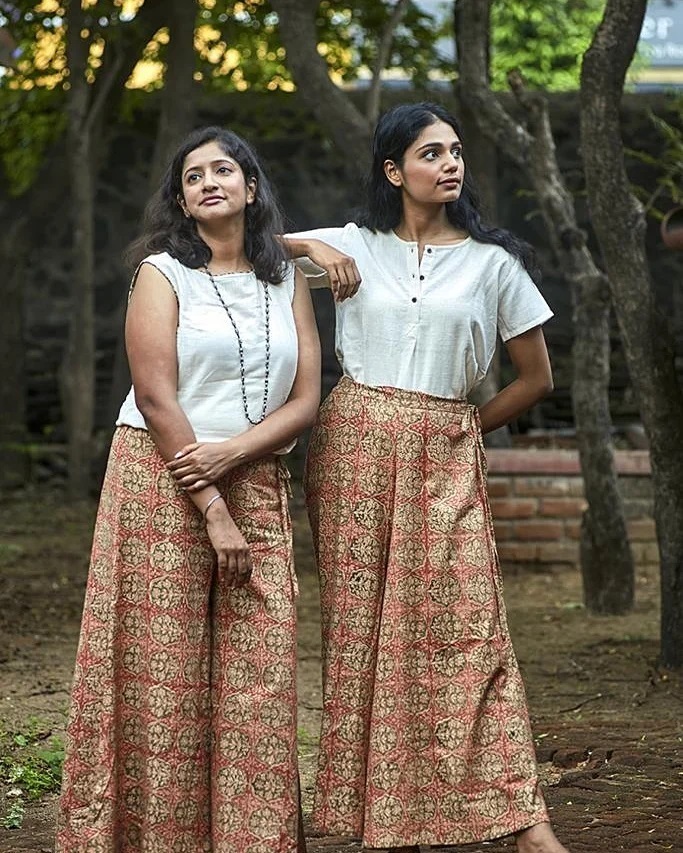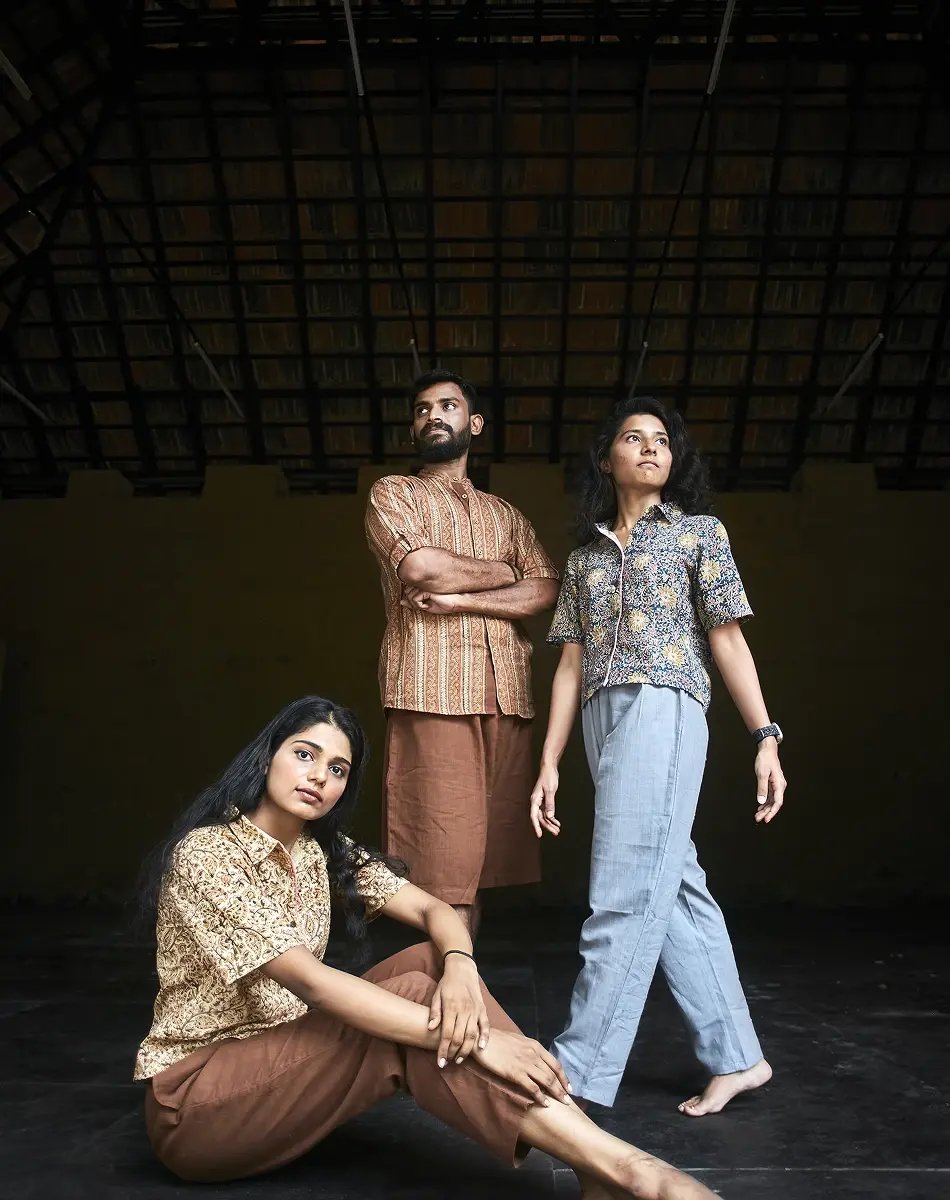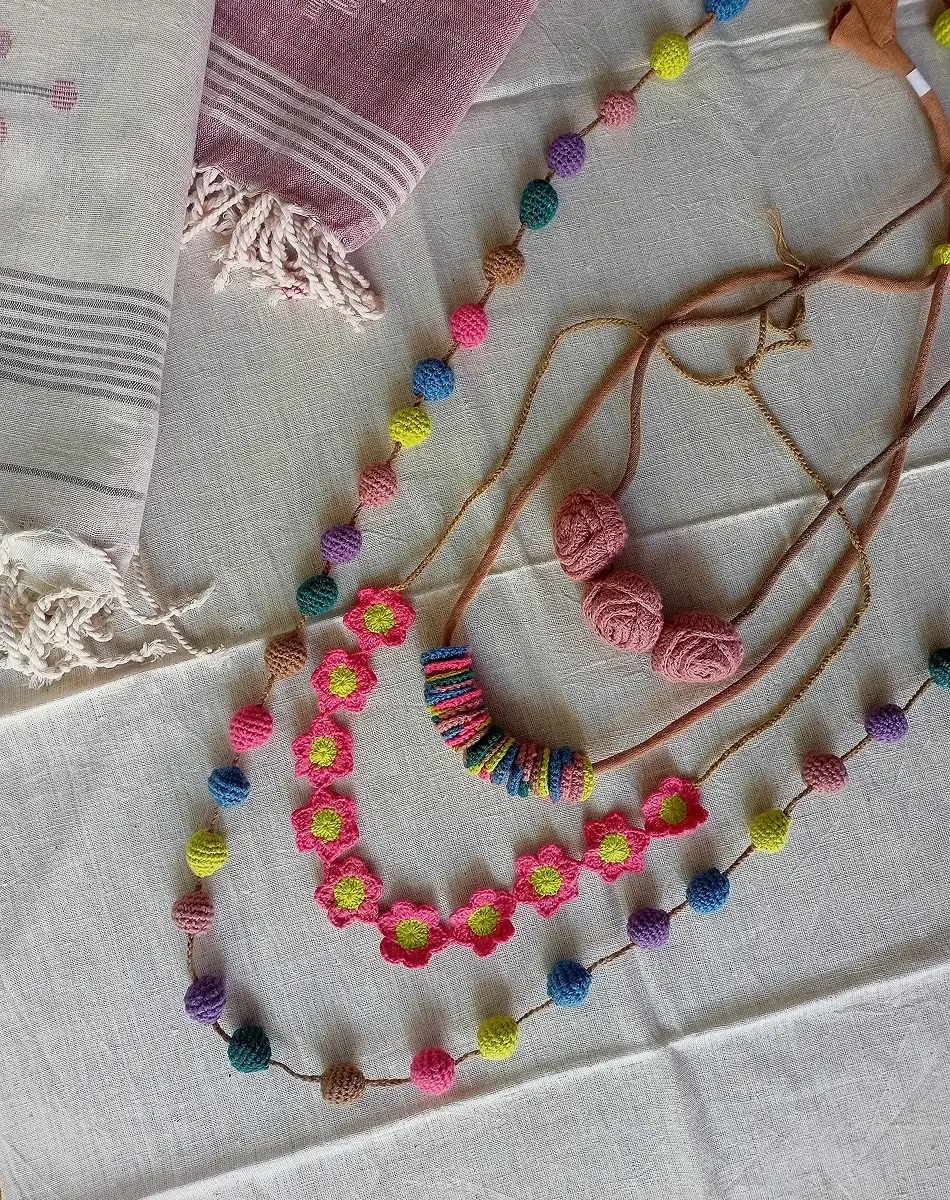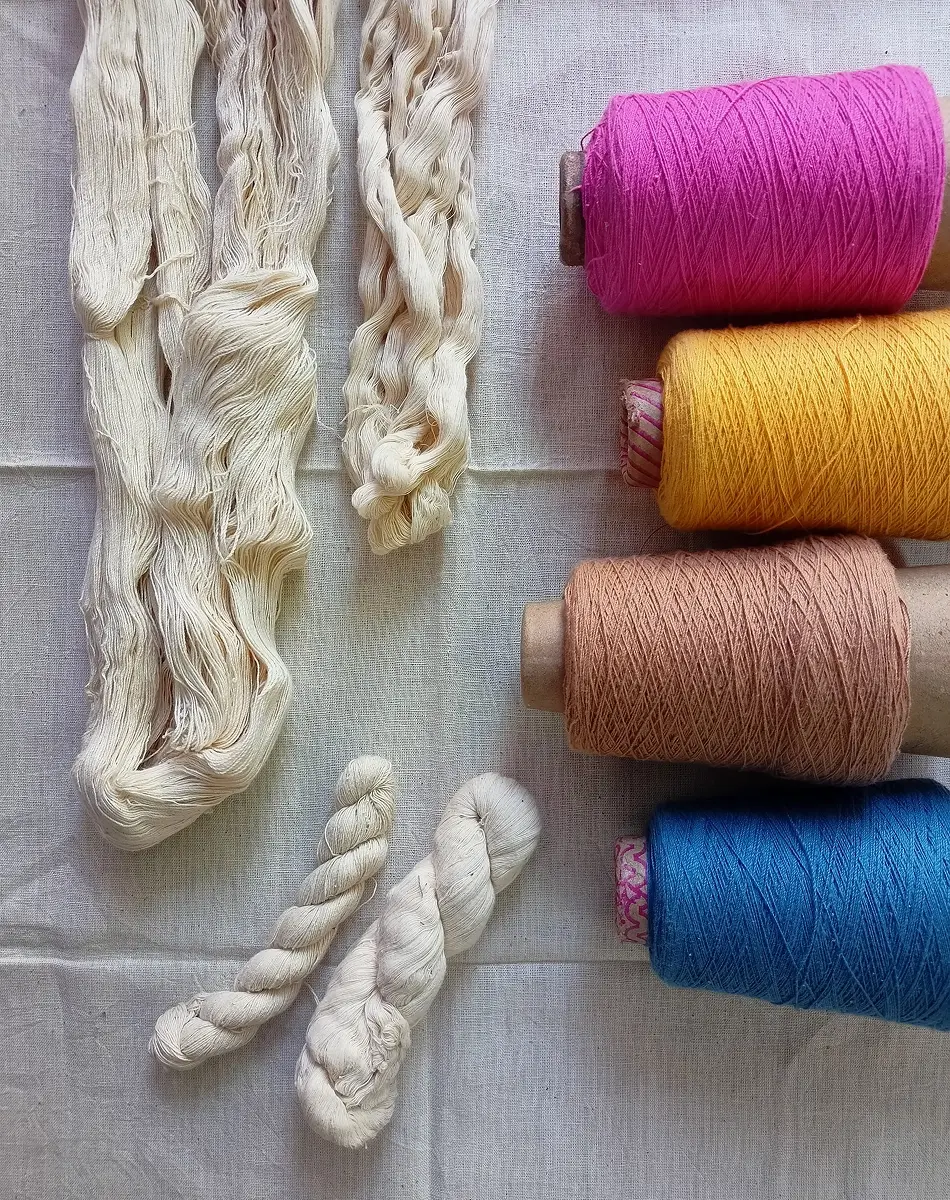Tula India – Organic Desi Cotton, Handspun, Handwoven, Natural Dyed and Manual Tailored Clothing
- About Us
- Products
-
-
-
-
- WomenChoose from a wide range of colourful Tops/kurtis made using rainfed organic cotton, hand spun, hand woven, naturally dyed and manually tailored.
- MenFrom half sleeves to full sleeve shirts, short kurtas to long kurtas. Make your choice!
- KidsA wide collection of kids wear for boys and girls using the finest and softest cotton.
- BottomsChoose from our range of unisex pajams, Palazzo, Shorts, Towels and more
-
-
- Value Chain
- Ambassadors
- News
- Events
- Catalog
- Gift
- Gallery
- Contact Us
Tula - A transition from enslavement to sovereignty, diversity & ecological restoration, in Indian cotton
It was in 2012 (if I am not mistaken) that a national workshop was taken up in Delhi with the active participation of several ASHA members, to review 10 years of Bt cotton approval in India. Various kinds of analyses of the experience were being presented by different stakeholders, and numerous regulators and officials from the Government of India also turned up in the workshop to participate.
Here, it was Vivek Cariappa of Krac-A-Dawna farm in Mysuru district of Karnataka who raised the issue of India’s national flag itself being made of Bt cotton now; he also pointed out that starting from the under-garments that we all wear, we have been enslaved by Monsanto’s Bt cotton. Julie and Vivek Cariappa, along with their family members and team members, are self reliant when it comes to their food, shelter and clothing. Not all farmers can be like them, at the individual farm household level, but can be, for the most part, at the community level.
Vivek’s comments pricked the conscience of Ananthoo quite deeply. It was for issues like this that he and his wife had come back from Switzerland to India. He began his explorations around the cotton value chain, and what really happened after Bt cotton’s entry. That is how the journey of Tula started really. Earlier to this, in the fifth year or reStore (a not-for-profit organic retail enterprise that sought to build a conscious community), the initiators were being asked about the high incidence of farm suicides in cotton belts of India after the advent of GM cotton which left a discomfort about the issue not being addressed with solid solutions.
Ananthoo felt very agitated (and more of us should feel this too) that India’s national flag was now made of hazardous cotton, which Monsanto had the gall to claim as its own patented material. To this day, India’s patent laws allow this – if an entity like Monsanto/Bayer can tweak the natural genome of cotton or any other plant by inserting some alien genetic material into the DNA, it gets to patent that material and in a de facto fashion, a certain control is exercised over cotton seed itself. Patentability of genetic material in Indian legislation is something that the Supreme Court never got to adjudicate since warring MNC and Indian seed companies conveniently chose to arrive at an agreement and pulled out the cases from the Courts.
The road to disaster & distress – From Desi Cotton to American Cotton varieties, to American Cotton hybrids to American Cotton Bt cotton hybrids: Long before Bt cotton came along to destroy our sovereignty, ecological equilibrium and diversity with regard to cotton crop, there was the advent of American cotton, brought in by colonial rulers of India. Gossypium hirsutum cotton, or American cotton, was not the main cotton grown in India till the middle of the 18th century. Indian farmers grew indigenous cotton species of G arboreum and G herbaceum, which were spun into fine yarn and woven into fantastic fabric of different signature styles all over India. Even though these were short staple cottons, skilled spinners and weavers created magic out of these cottons.
The first seeds of American cotton were reportedly sown in India in 1790, and today, about 95% of India’s cotton is American cotton. The reason why American cotton was brought in and pushed by the British is related to the textile mills in the UK. Medium staple length cotton was in short supply to the textile industry in Britain when the supply from America reduced. The desi cottons from India were not found suitable for the large textile mills of Manchester and Lancashire, and therefore, a systematic effort to replace these cottons with American cotton began by the colonial rulers, for their exploitative economy. Along with American cotton came monocropping to some extent. Pest and disease incidence increased on the cotton crop. This cotton was really not suited for the Indian growing conditions or the cotton value chain that existed at that time. Despite much push to American cotton, at the time of Independence, only 3% of India’s cotton land was planted to American cottons.
Then came the cotton hybrid, the very first time a hybrid was created in cotton crop anywhere in the world being in India. The hybrid technology was also pushed in American cotton species, initially from the public sector; later, this was pushed by the private seed industry which was seeking to profiteer from a technology that enslaves farmers. Cotton farmers were forced to go back to the seed sellers season after season. As you would know, in hybrid seed technology, seed does not come as a singular input. It performs only with a set of other inputs (which create greater businesses for the agri-input industry) like pesticides and chemical fertilisers.
However, several decades after hybrids were released, the ones who benefited the most from such a hybrid “revolution” in cotton crop are mainly the corporations in the agri-input industry – cotton hybrid seeds as well as numerous kinds of deadly pesticides and chemical fertilisers became the norm for cotton crop cultivation by farmers. Irrigation also entered the picture, where desi cottons were grown as rainfed crops. The expenditure on cotton crop cultivation started to increase steeply, with pest and disease problems increasing as the crop ecology was getting destroyed season after season. The market prices were of course not commensurate with the expenditure being made by farmers. Once India opened up its markets in the name of globalisation and liberalisation to heavily-subsidised produce from countries like the USA, the agrarian distress of cotton farmers intensified and the spate of farm suicides started to be concentrated around cotton crop.
To make matters worse, illegal Bt cotton started to be cultivated from 2000 onwards, and spread to tens of thousands of hectares by 2001. Indian regulators, who were caught napping, decided to look relevant and respectable by simply deciding to approve Bt cotton cultivation in India in March 2002. By the time Bt cotton made its entry into India, desi cotton was being grown on only 25% of India’s cotton land. By the year 2011, the area under desi cottons shrunk to less than 2%.
This, despite the fact that most cotton cultivation is under rainfed conditions, with the desi cotton cultivars being drought-tolerant, pest- and disease-resistant and being capable of giving higher yields with low and negligible inputs. In fact, in several places, desi cotton is grown as a secondary crop to other commercial crops like chilli or onions or coriander, and the farmers actually tend to the other crops, with incidental support being received by the desi cotton crop! Desi cotton is also preferred by livestock rearers for the more nutritious oilseed cake that they can feed to their animals. Despite all the positive features of Desi cotton, the mindsets of the agricultural science establishments, the privatisation policies of governments that left the seed sector to be led by companies that seek to profiteer over various inputs including seed, the orchestrations of the MNC lobbies, the patent that Monsanto holds over BGII Bt cotton technology, the licensing agreements that it has with various Indian companies and several other such factors have left us with a situation where Bt cotton continues to reign in the cotton seed market. Such Bt cotton is technically, or legally speaking, a patented proprietary technology of Monsanto, now owned by Bayer. Royalties and licensing fees of tens of crores of rupees have been collected from Indian farmers, while farm suicides mostly of Bt cotton farmers continue unabated. Chemical usage in cotton crop has only increased, despite the false claims of Bt cotton proponents. Irrigated cotton is on the increase. Livestock rearing is coming down and mixed cropping is seen as a labour-intensive affair by most farmers who would rather use machines for their agricultural operations.
TULA emerges on the scene: It is against this backdrop that TULA has decided to focus on Indian or desi cotton species, in its enterprise. Krishna Prasad of Sahaja Samrudha was the one to encourage Ananthoo to explore the future of the cotton value chain enterprise that he was working on, around desi cottons.
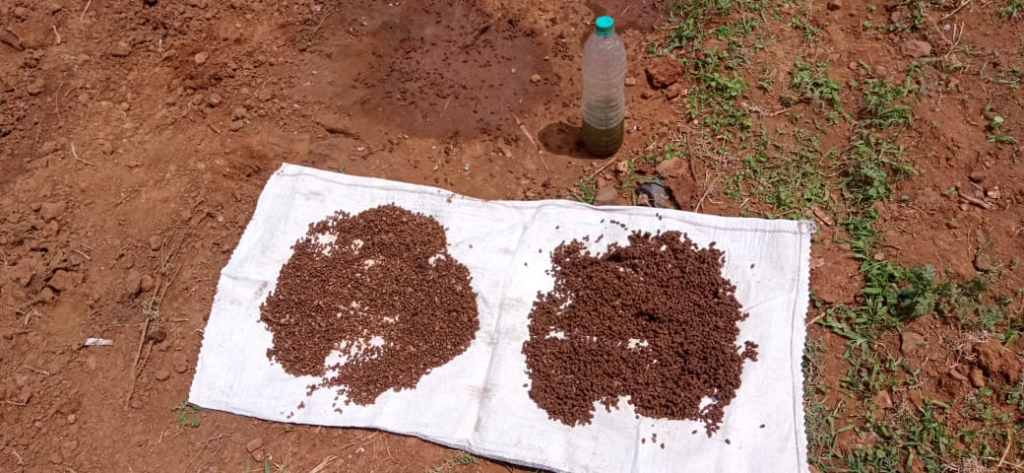
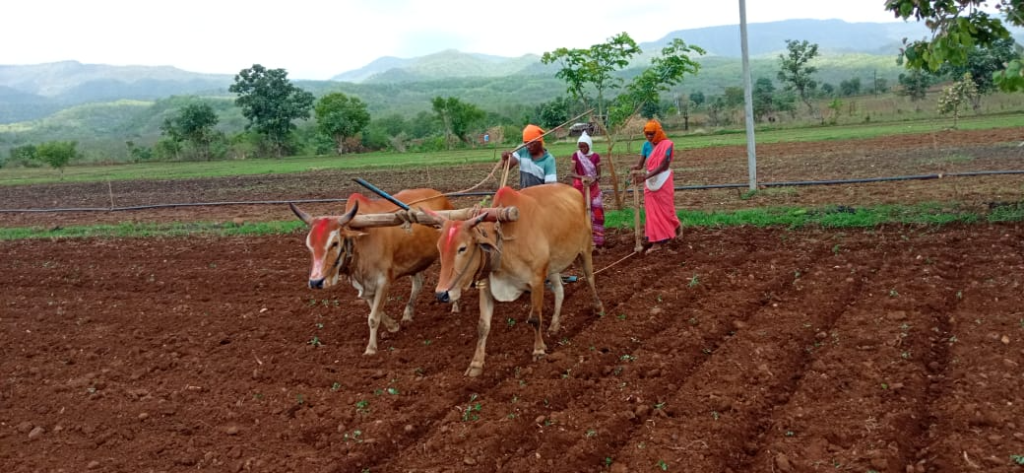
The cotton yarn, which is of short staple, is then hand-spun at a time when the skills related to hand spinning are present in only a few pockets, with only some women. This then is an effort to keep alive, and revive the knowledge and skills related to spinning from short staple cotton. Here, the spinners once again get paid far more than what spinners in other institutions, government/semi-government/Gandhian/other, get.
Such yarn is then woven manually, on different kinds of hand looms, after natural dyeing. Tula makes sure that invisible women in the processes of weaving, get remunerated and this is an element not addressed in most other interventions.
This is Tula’s contribution to freeing up Indian cotton cultivation, and the producers from enslavement by corporations like Monsanto/Bayer. It is a political thought, an ecological-revival thought and a social justice project that has been seeded by Tula.
Several such full-value-chain interventions are needed across India, and it is not enough to just talk about Khadi, or to just wear so-called handloom, when the entire value chain cannot be revived towards sustainability, profitability, equity and sovereignty. Tula has shown how this can be done, and it is time that other committed entrepreneurs emulate the model.

